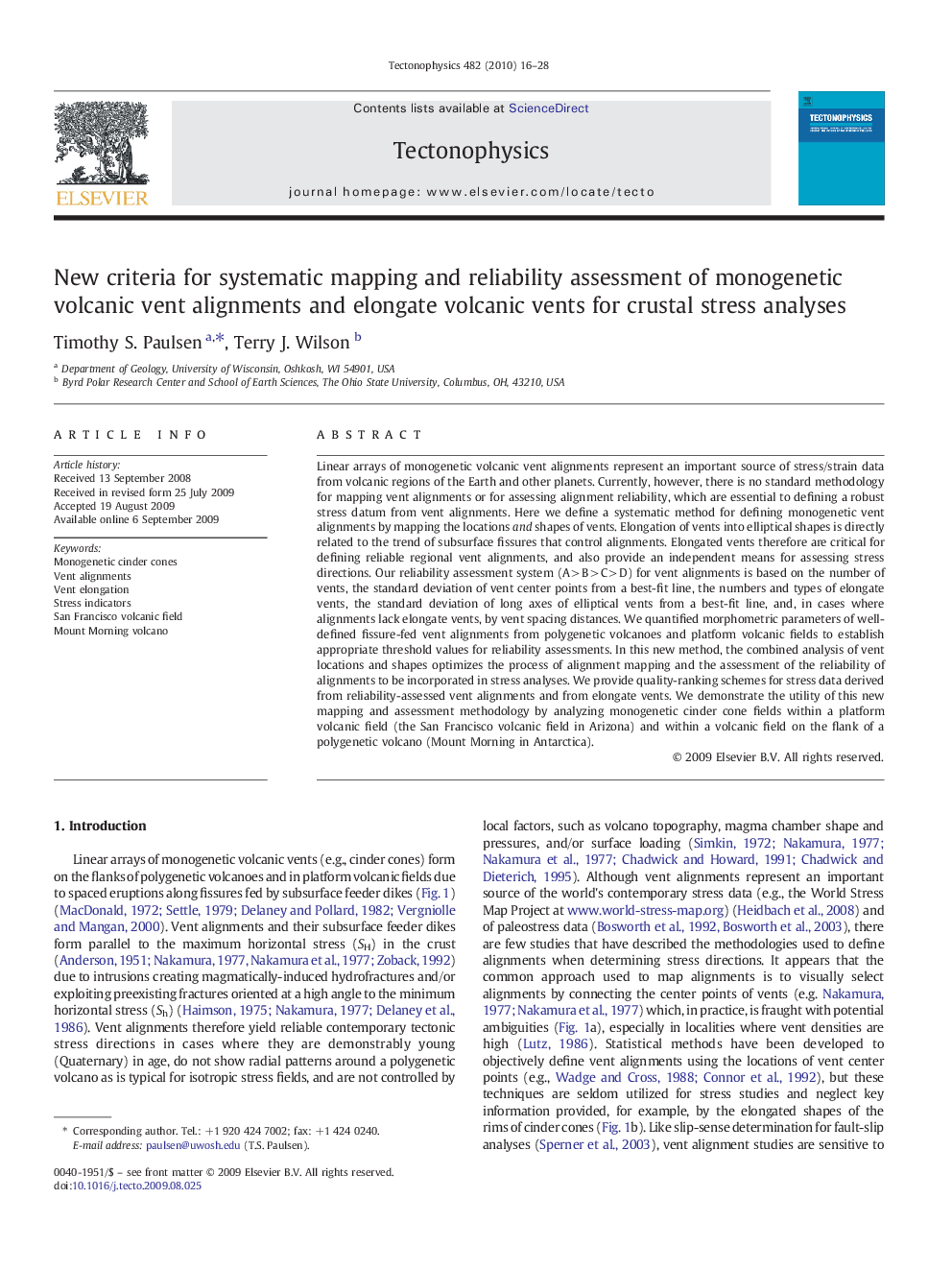| Article ID | Journal | Published Year | Pages | File Type |
|---|---|---|---|---|
| 4693594 | Tectonophysics | 2010 | 13 Pages |
Linear arrays of monogenetic volcanic vent alignments represent an important source of stress/strain data from volcanic regions of the Earth and other planets. Currently, however, there is no standard methodology for mapping vent alignments or for assessing alignment reliability, which are essential to defining a robust stress datum from vent alignments. Here we define a systematic method for defining monogenetic vent alignments by mapping the locations and shapes of vents. Elongation of vents into elliptical shapes is directly related to the trend of subsurface fissures that control alignments. Elongated vents therefore are critical for defining reliable regional vent alignments, and also provide an independent means for assessing stress directions. Our reliability assessment system (A > B > C > D) for vent alignments is based on the number of vents, the standard deviation of vent center points from a best-fit line, the numbers and types of elongate vents, the standard deviation of long axes of elliptical vents from a best-fit line, and, in cases where alignments lack elongate vents, by vent spacing distances. We quantified morphometric parameters of well-defined fissure-fed vent alignments from polygenetic volcanoes and platform volcanic fields to establish appropriate threshold values for reliability assessments. In this new method, the combined analysis of vent locations and shapes optimizes the process of alignment mapping and the assessment of the reliability of alignments to be incorporated in stress analyses. We provide quality-ranking schemes for stress data derived from reliability-assessed vent alignments and from elongate vents. We demonstrate the utility of this new mapping and assessment methodology by analyzing monogenetic cinder cone fields within a platform volcanic field (the San Francisco volcanic field in Arizona) and within a volcanic field on the flank of a polygenetic volcano (Mount Morning in Antarctica).
